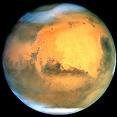 Close Topic Options
Close Topic OptionsMars - Page 6 of 9
NASA Mars Orbiter tracks back-to-back regional - Page 6 - Sciences, Education, Art, Writing, UFO - Posted: 13th Mar, 2017 - 11:01am
Mars
NASA rover findings point to a more Earth-like Martian past
Chemicals found in Martian rocks by NASA's Curiosity Mars rover suggest the Red Planet once had more oxygen in its atmosphere than it does now. The findings add to evidence revealing how Earth-like our neighboring planet once was. Ref. Source 3c.
Mars UFO & Writing Art Education Sciences
Earthquakes, ‘Mars-quakes,’ and the possibility of life
A new study shows that rocks formed by the grinding together of other rocks during earthquakes are rich in trapped hydrogen -- a finding that suggests similar seismic activity on Mars may produce enough hydrogen to support life. Ref. Source 6j.
Mars
Several reasons, chief among them:
-Mars once had an atmosphere that could have been modified to support human life. It might be possible to restore, and begin the long process of terraforming the planet to serve as a second Earth.
-Generally speaking, knowledge of other planets advances our knowledge of this universe, and often leads to useful advances at home.
-Mars has a large quantity of useful materials that would be of benefit, if the difficulties of returning them home could be surpassed.
-More sociologically speaking, humanity stagnates without some kind of frontier. We need new places to go and explore.
Mars
Evidence of 2 billion years of volcanic activity on Mars
Analysis of a Martian meteorite found in Africa in 2012 has uncovered evidence of at least 2 billion years of volcanic activity on Mars. This confirms that some of the longest-lived volcanoes in the solar system may be found on the Red Planet. Ref. Source 6b.
Mars - Page 6
I'd love to head to be one of the people chosen to go to Mars. Just like I always wished I was one of the Europeans deep in the North American wilderness around 1600, or a Lakota tribesman in the early 1700s. How about one of the people crossing over to Europe and Asia from Africa 100,000 years ago or so. Imagine meeting and befriending Neanderthals, hunting mammoths, and fending off saber toothed tigers. I have an adventurous spirit. I guess that's why I joined the Army as a paratrooper and then moved to other units that would keep me moving around.
Mars Sciences Education Art Writing & UFO - Page 6
NASA Mars Orbiter tracks back-to-back regional storms
A regional dust storm currently swelling on Mars follows unusually closely on one that blossomed less than two weeks earlier and is now dissipating, as seen in daily global weather monitoring by NASA's Mars Reconnaissance Orbiter. Ref. Source 3v.
 TOPIC: Mars
TOPIC: Mars Getting to Mars - Terra Forming - Getting to Mars from Earth
Getting to Mars - Terra Forming - Getting to Mars from Earth